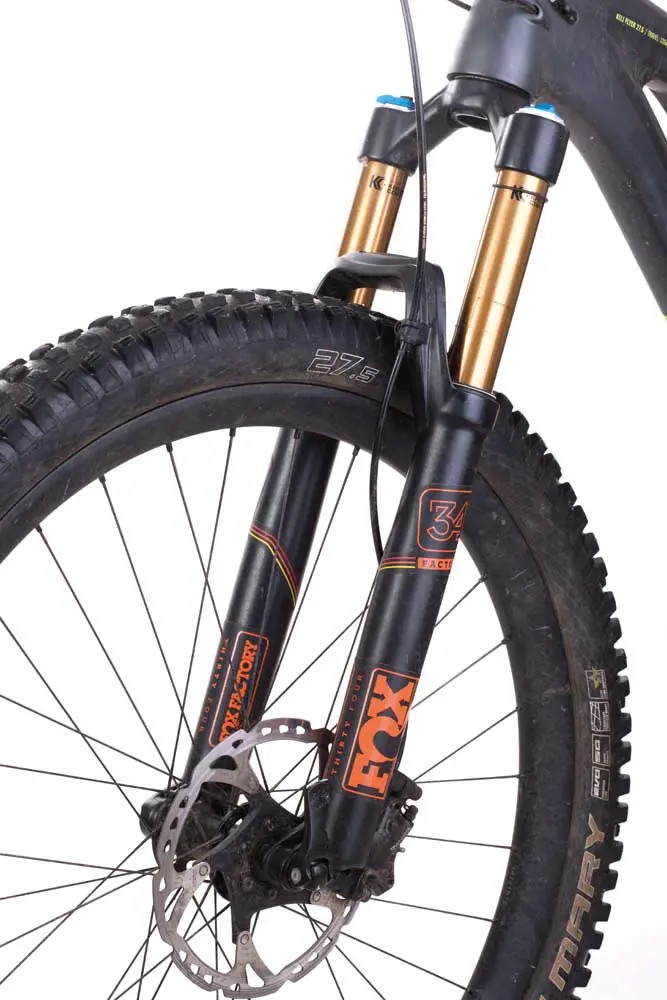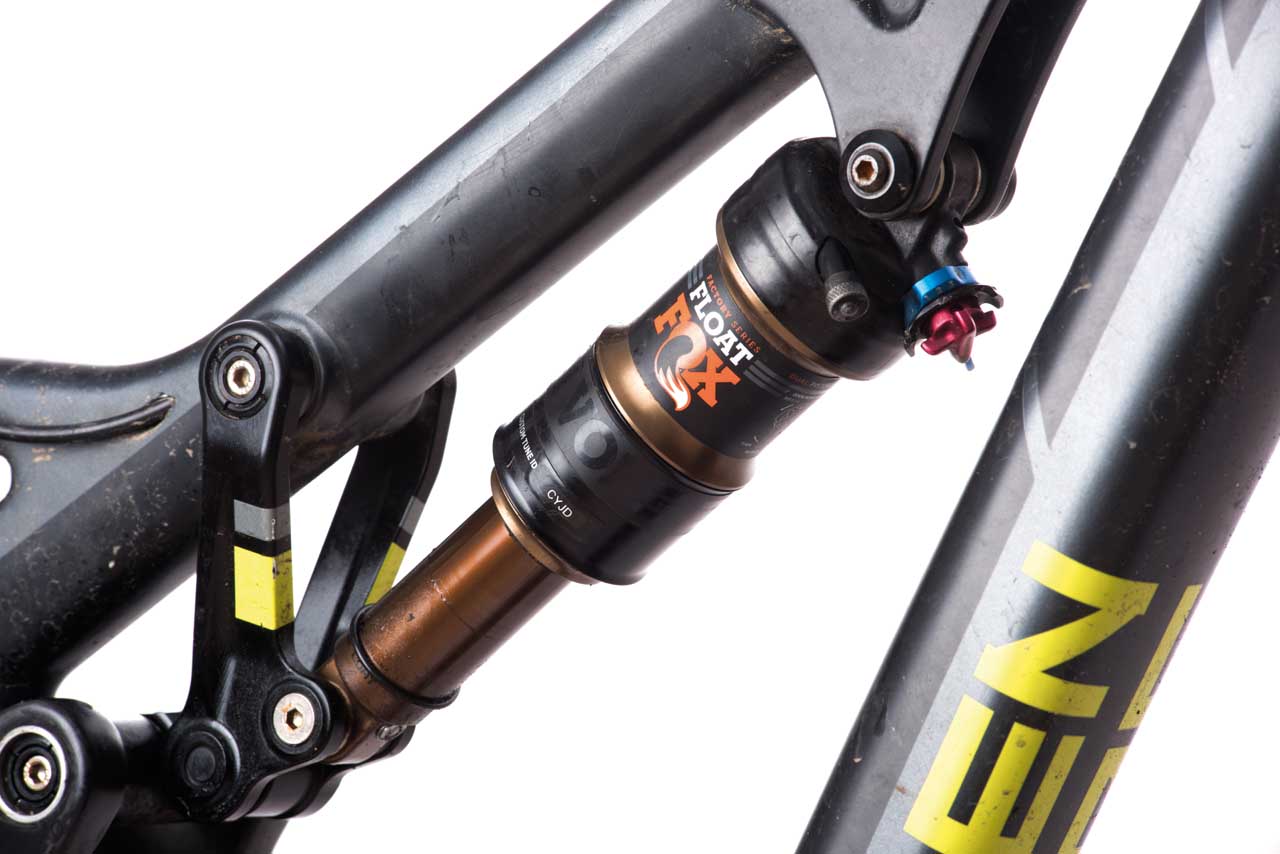First published in Singletrack Magazine issue 97
Fox’s previous 34 was one of the first of a new generation of beefy trail forks. Tougher and stiffer than the more race-based 32 and not as chunky or in need of epic drops and rocks as the more enduro 36s. While the chassis was praised by many, a similar number of riders never really got on with the CTD (Climb, Trail, Descend) settings of the stock forks. The Descend setting was felt to be too lacking in damping adjustment, or the Trail setting wasn’t supple enough when the fork had enough air in to keep the fork from diving in Descend mode.
The 34 now gains the Fit RC2 cartridge set-up found on its 36 big brother, which allows a lot more tuneability and consistency, and for 2016, the CTD system is no more, replaced with the RC2 set-up found in the 36. The weight, too, has been pared down to the point that the fork now comes in at just under 1,800g on our scales – 200g lighter than the previous model. The fork comes in travel options from 120mm up to 160mm.
Instead of the CTD of old, there is still a three-way lever, but this is Open, Medium and Firm. Rather than five clicks of damping adjustment on the Trail setting, there are now 22 clicks of compression adjustment in the Open setting, with the medium setting effectively being pre-set on click 23. Additional air spacers are supplied for further tuning the spring curve.
With some careful setting up, the fork was instantly useable. After checking that the three positions worked as expected, I left it in Open for most of the time, whereas before I’d have left a 2015 fork in Trail. Having dialled in the open damping, the fork was happy enough on the climbs and impeccable on fun, twisty trails, where the stiffer 34mm stanchions were noticeable over the relatively weedy 32s. Fast and bumpy descents, meanwhile, were a ‘how fast do you dare?’ exercise with the fork galloping over the landscape, even on consistently repetitive hits and offering up all the travel, without feeling out of control or short on class.
Fox’s new Float rear shock is visually a departure, with its striking bulbous look: this is the new and vastly enlarged negative air chamber designed to fight the natural stiction that air shocks have always had, and to make the bike feel more supple on the smaller stuff.

This is definitely a ‘read the flipping manual’ component. Correct set-up takes a few minutes, as you need to semi-pressurise it, cycle the shock slowly so that the positive and negative pressures equalise and then add more air – going through the process three or four times until it’s prefect.
Again, the rear shock has adjustment for the open position, rather than for the medium, platform setting. With the platform engaged, the bike is stable on climbs and stays high in the travel ready for unexpected bumps.
I’ve used the Fox pairing on my Kili Flyer around the rocky local test tracks and gritty night rides here, but also on an outing to Peebles where I had all the off-camber rooty loam and catch-berms I don’t get at home. So far I’ve been very impressed with the pair; both of them offer up a controlled amount of suspension without any fuss. In Open modes, the bike is well behaved enough not to have to reach for the platform settings on the climbs, but when things get steep, the sedate pace of the damping disappears as the speeds go up. Performance-wise, I can’t yet fault them – apart from a swiftly gritty adjuster knob on the forks, but even this is now easily serviceable.
Overall:
The weight loss now means that the 34 is now a viable choice for harder riding trail riders – and with travel from 120 to 160mm, expect to see a lot of them around. Does the Pike finally have a competitor? I’m tempted to say yes.





